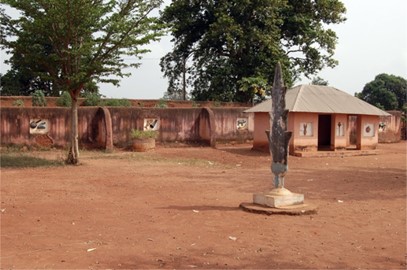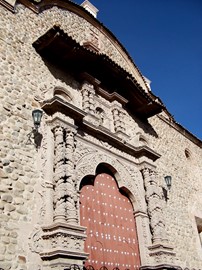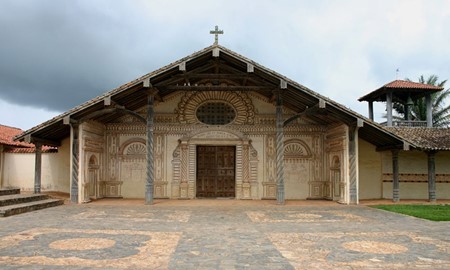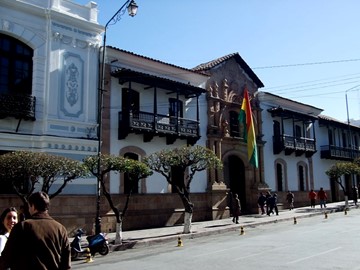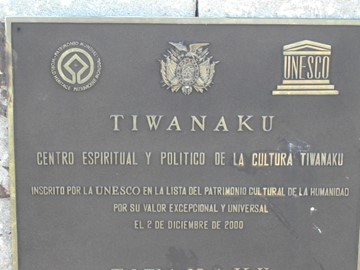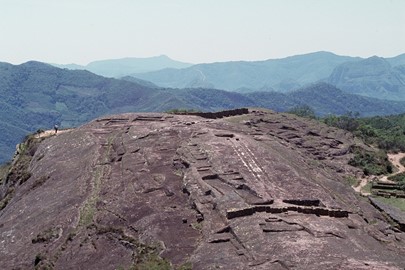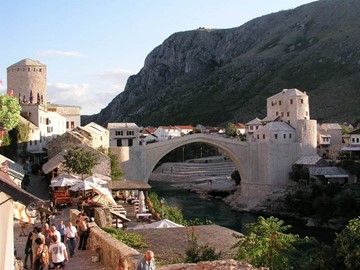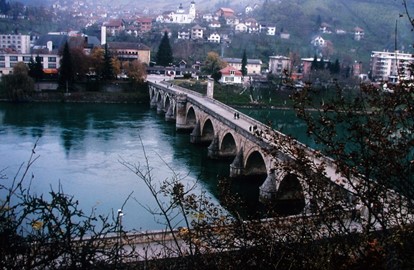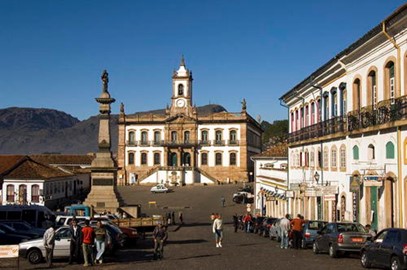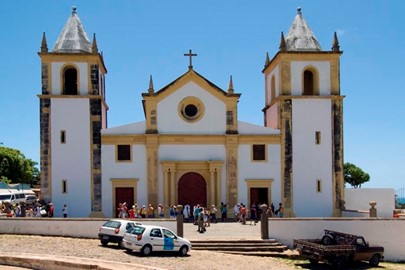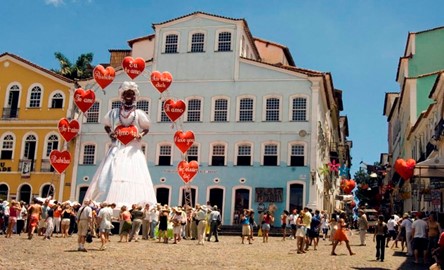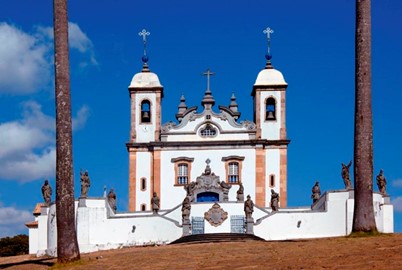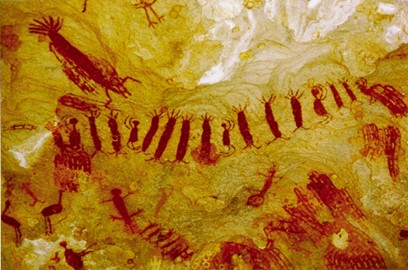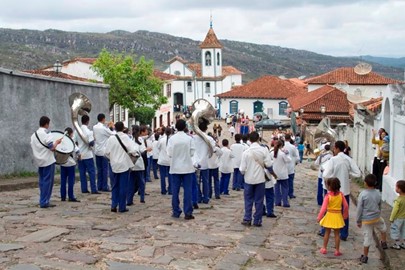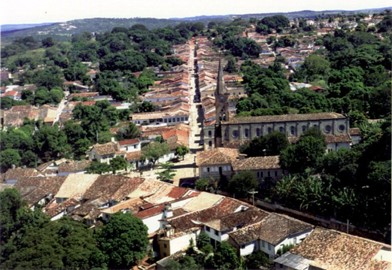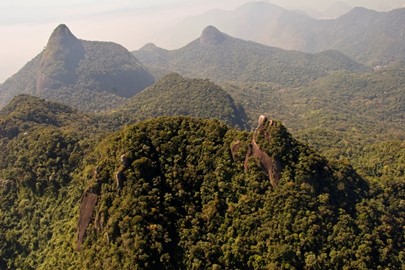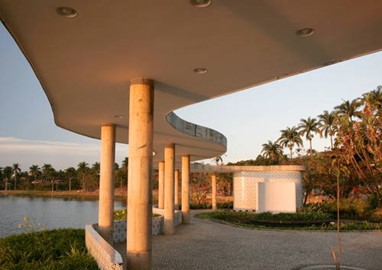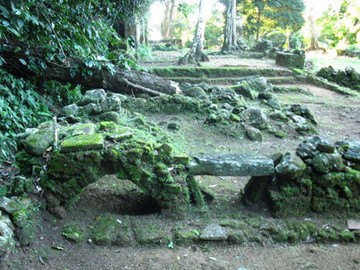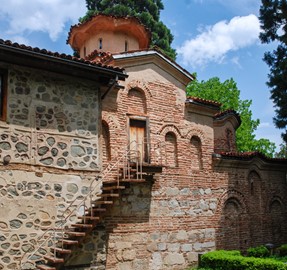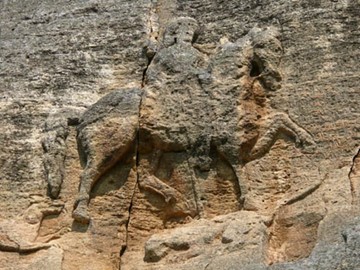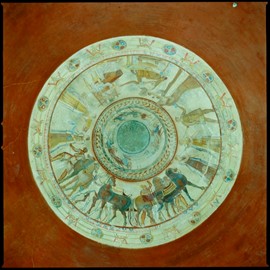category :: cultural
Royal Palaces of Abomey
The Royal Palaces of Abomey, a UNESCO World Heritage site in Benin, are a historic complex of earthen structures built by the Fon kings between the 17th and 19th centuries. Spanning 12 palaces, they feature intricate bas-reliefs and artifacts that narrate the kingdom’s history, culture, and power. Recognized by UNESCO in 1985, the site reflects the architectural ingenuity and political legacy of the Dahomey Kingdom. Despite past damage, it remains a striking symbol of Benin’s royal heritage.
Potosí
The City of Potosí, a UNESCO World Heritage site in Bolivia, is a historic colonial city famed for its role in silver mining during the Spanish Empire. Established in 1545, it features grand churches, colonial architecture, and the Cerro Rico mine, which fueled global economies for centuries. Recognized by UNESCO in 1987, it showcases a blend of indigenous and European influences amid a dramatic landscape. The city stands as a testament to Bolivia’s mining history and colonial past.
Jesuit Missions of the Chiquitos
Between 1696 and 1760, six ensembles of reducciones (settlements of Christianized Indians) inspired by the ‘ideal cities’ of the 16th-century philosophers were founded by the Jesuits in a style that married Catholic architecture with local traditions. The six that remain – San Francisco Javier, Concepción, Santa Ana, San Miguel, San Rafael and San José – make up a living heritage on the former territory of the Chiquitos.
Sucre
Sucre, a UNESCO World Heritage site in Bolivia, is a well-preserved colonial city celebrated for its historical and architectural significance. Founded in 1538, it features whitewashed buildings, ornate churches, and grand civic structures, reflecting its past as a political and cultural center of Spanish rule. Inscribed by UNESCO in 1991, it embodies a harmonious blend of indigenous and European styles. Sucre remains a living showcase of Bolivia’s colonial heritage and urban elegance.
Tiwanaku
Tiwanaku, a UNESCO World Heritage site in Bolivia, is an ancient pre-Columbian archaeological site renowned for its monumental stone architecture and cultural legacy. Flourishing between 300 and 1000 CE, it features the iconic Gateway of the Sun, massive monoliths, and intricate carvings, reflecting the sophistication of the Tiwanaku civilization. Recognized by UNESCO in 2000, it offers insight into one of South America’s earliest urban societies. The site remains a powerful symbol of Bolivia’s indigenous h... Read More
Fuerte de Samaipata
The archaeological site of Samaipata consists of two parts: the hill with its many carvings, believed to have been the ceremonial centre of the old town (14th–16th centuries), and the area to the south of the hill, which formed the administrative and residential district. The huge sculptured rock, dominating the town below, is a unique testimony to pre-Hispanic traditions and beliefs, and has no parallel anywhere in the Americas.
Mostar
Mostar, a UNESCO World Heritage site in Bosnia and Herzegovina, is a historic city famed for its iconic Old Bridge and cultural diversity. Built in the 16th century by the Ottomans, the elegant stone bridge spans the river, linking the city’s blend of Eastern and Western architectural styles. Recognized by UNESCO in 2005, it symbolizes resilience and reconciliation after wartime destruction. Mostar remains a vibrant testament to the country’s multicultural heritage.
Mehmed Paša Sokolović Bridge
The Mehmed Paša Sokolović Bridge, a UNESCO World Heritage site in Bosnia and Herzegovina, is a masterpiece of Ottoman architecture completed in 1577. Designed by the renowned architect Sinan, this elegant stone bridge features 11 arches and spans the river with graceful symmetry, reflecting engineering brilliance. Inscribed by UNESCO in 2007, it stands as a symbol of cultural exchange and historical significance. The bridge remains an enduring icon of the country’s Ottoman legacy.
Tsodilo
Tsodilo, a UNESCO World Heritage site in Botswana, is a sacred rocky outcrop renowned for its ancient rock art and spiritual significance. Featuring over 4,500 paintings from as early as 1000 BCE, it reflects millennia of human presence and cultural traditions of the San people. Recognized by UNESCO in 2001, the site’s striking quartzite hills also hold archaeological evidence of early habitation. Tsodilo stands as a profound testament to Botswana’s prehistoric heritage.
Ouro Preto
The Historic Town of Ouro Preto, a UNESCO World Heritage site in Brazil, is a colonial gem celebrated for its Baroque architecture and gold rush history. Founded in the late 17th century, its cobblestone streets are lined with ornate churches, grand mansions, and works by sculptor Aleijadinho, reflecting its past wealth. Recognized by UNESCO in 1980, it preserves a vivid picture of Brazil’s 18th-century prosperity. Ouro Preto remains a striking symbol of the country’s cultural and artistic legacy.
Olinda
The Historic Centre of the Town of Olinda, a UNESCO World Heritage site in Brazil, is a vibrant colonial settlement famed for its 16th- and 17th-century architecture. With colorful buildings, Baroque churches, and convents perched on hills, it reflects Portuguese influence and a rich cultural past. Inscribed by UNESCO in 1982, it’s renowned for its well-preserved urban layout and lively traditions, like Carnival. Olinda stands as a captivating showcase of Brazil’s colonial heritage.
Salvador da Bahia
The Historic Centre of Salvador de Bahia, a UNESCO World Heritage site in Brazil, is a colorful colonial district renowned for its Afro-Brazilian culture and architecture. Established in 1549 as Brazil’s first capital, it features cobblestone streets, vibrant churches, and 16th-century buildings blending Portuguese and African influences. Recognized by UNESCO in 1985, it’s a living testament to the country’s early history and cultural fusion. Salvador remains a dynamic symbol of Brazil’s diverse heritage.
Sanctuary of Bom Jesus do Congonhas
The Sanctuary of Bom Jesus do Congonhas, a UNESCO World Heritage site in Brazil, is an 18th-century Baroque complex celebrated for its artistic and religious significance. Featuring a church, ornate staircases, and 12 life-sized soapstone statues of prophets by sculptor Aleijadinho, it reflects colonial mastery. Inscribed by UNESCO in 1985, it stands as a pinnacle of Brazilian sacred art and architecture. The sanctuary remains a striking emblem of the country’s cultural heritage.
Brasilia
Brasilia, a UNESCO World Heritage site in Brazil, is a modernist capital city celebrated for its innovative urban planning and architecture. Designed in the 1950s by Oscar Niemeyer and Lúcio Costa, it features bold, futuristic buildings like the Cathedral and National Congress, laid out in a unique airplane-shaped grid. Inscribed by UNESCO in 1987, it represents a landmark in 20th-century design. Brasilia stands as a symbol of Brazil’s architectural ambition and urban vision.
Serra da Capivara
Serra da Capivara National Park, a UNESCO World Heritage site in Brazil, is an archaeological treasure renowned for its ancient rock art and prehistoric significance. Housing thousands of paintings dating back over 25,000 years, it offers evidence of early human presence in South America, set amid dramatic cliffs and canyons. Recognized by UNESCO in 1991, it’s a vital window into humanity’s distant past. The park remains a remarkable testament to Brazil’s ancient heritage.
São Luís
São Luís, a UNESCO World Heritage site in Brazil, is a historic colonial city celebrated for its well-preserved Portuguese architecture and cultural richness. Founded in 1612 by the French and later shaped by the Portuguese, its historic center boasts tiled buildings, cobblestone streets, and vibrant traditions like Bumba Meu Boi. Inscribed by UNESCO in 1997, it reflects a unique blend of colonial influences. São Luís stands as a lively symbol of Brazil’s diverse heritage.
Diamantina
Diamantina, a UNESCO World Heritage site in Brazil, is a colonial town famed for its diamond mining past and 18th-century architecture. Its cobblestone streets, Baroque churches, and vibrant houses showcase the wealth of the diamond era. Inscribed by UNESCO in 1999, it offers a well-preserved glimpse into Brazil’s colonial history. The town stands as a charming testament to the country’s cultural heritage.
Goiás
Goiás, a UNESCO World Heritage site in Brazil, is a colonial town renowned for its 18th- and 19th-century architecture and historical charm. With cobblestone streets, simple churches, and red-tiled houses, it reflects its past as a gold mining and administrative center. Recognized by UNESCO in 2001, it preserves Brazil’s early inland settlement heritage. Goiás remains a quaint symbol of the country’s colonial history.
São Francisco Square
São Francisco Square in the Town of São Cristóvão, a UNESCO World Heritage site in Brazil, is a historic gem showcasing a well-preserved colonial urban layout from the 16th century. This picturesque square, framed by charming cobblestone streets, features notable landmarks like the São Francisco Church and Convent, blending Portuguese architectural influences with local adaptations. Recognized for its cultural and historical significance, it reflects the early fusion of European and Brazilian traditions dur... Read More
Rio de Janeiro
Rio de Janeiro: Carioca Landscapes between the Mountain and the Sea, a UNESCO World Heritage site in Brazil, is renowned for its breathtaking natural beauty and cultural harmony. This site features dramatic mountains, lush forests, and iconic beaches seamlessly integrated with the city’s urban fabric, including landmarks like Sugarloaf Mountain and Copacabana Beach. Celebrated as the first urban landscape honored by UNESCO for its natural setting, it reflects the unique interplay between human development a... Read More
Pampulha
The Pampulha Modern Ensemble, a UNESCO World Heritage site in Brazil, is a striking showcase of mid-20th-century modernist architecture and design. This innovative complex, centered around an artificial lake, features bold works by architect Oscar Niemeyer, including the São Francisco de Assis Church with its distinctive curves, alongside contributions from artist Cândido Portinari and landscape designer Roberto Burle Marx. Recognized for its pioneering blend of art, architecture, and nature, it marks a piv... Read More
Valongo Wharf
Valongo Wharf, a UNESCO World Heritage site in Brazil, is a poignant historical landmark tied to the transatlantic slave trade. Built in the early 19th century, this stone wharf served as the main arrival point for enslaved Africans, bearing witness to a somber chapter of human history. Unearthed and preserved as an archaeological site, it stands as a powerful memorial to the resilience of Afro-Brazilian culture and a testament to the nation’s efforts to confront its past.
Boyana Church
Boyana Church, a UNESCO World Heritage site in Bulgaria, is a medieval treasure renowned for its exceptional 13th-century frescoes. This small, unassuming church houses remarkably preserved murals that showcase a pivotal shift toward realism in European art, blending Byzantine influences with local creativity. Recognized for its historical and artistic significance, it offers a rare glimpse into the cultural and religious life of the Middle Ages in the region.
Madara Rider
The Madara Rider, a UNESCO World Heritage site in Bulgaria, is a striking 8th-century rock relief carved into a towering cliff. Depicting a triumphant horseman spearing a lion, accompanied by inscriptions, this monumental artwork symbolizes early Bulgarian statehood and artistic prowess under the First Bulgarian Empire. Celebrated for its historical and cultural value, it stands as a unique testament to medieval artistry and power in the region.
Thracian Tomb of Kazanlak
The Thracian Tomb of Kazanlak, a UNESCO World Heritage site in Bulgaria, is a remarkable 4th-century BCE burial chamber celebrated for its vivid frescoes. Hidden within a beehive-shaped dome, the tomb’s murals depict funeral rituals and mythological scenes with exceptional artistry, offering a rare window into Thracian culture and beliefs. Recognized for its historical and artistic significance, it stands as a masterpiece of ancient Hellenistic influence in the region.
